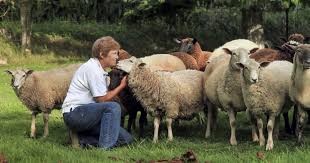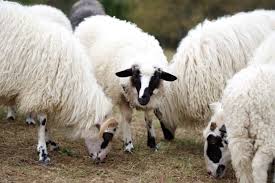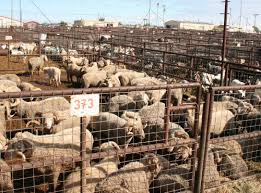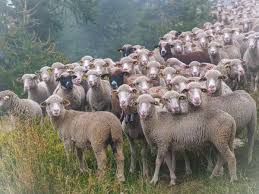Sheep farming techniques encompass a range of practices aimed at raising sheep for various purposes, including meat, wool, and milk production. This ancient form of agriculture has evolved significantly over the years, adapting to advancements in technology and changing market demands.
Sheep are versatile animals that can thrive in diverse environments, making them an ideal choice for farmers around the world.
Proper techniques in sheep farming not only enhance productivity but also ensure the health and welfare of the animals.
One of the primary techniques in sheep farming is effective pasture management. Grazing is a natural behavior for sheep, and providing them with high-quality pasture is essential for their growth and overall health.
Farmers must monitor pasture quality, ensuring that sheep have access to fresh grass and other forage throughout the grazing season.
Rotational grazing is a technique that helps maintain pasture health by preventing overgrazing. This involves dividing grazing areas into sections and rotating sheep between them, allowing the grass to recover and reducing soil erosion.
Nutrition is another crucial aspect of sheep farming. Sheep require a balanced diet to thrive, which includes adequate amounts of protein, carbohydrates, vitamins, and minerals. Farmers often supplement pasture grazing with hay, silage, and commercial feeds to meet the nutritional needs of their flocks.
It’s essential to adjust feeding strategies based on the sheep’s age, breed, and purpose (meat, wool, or milk production) to optimize growth and production.
Breeding techniques also play a vital role in sheep farming. Selecting the right breeds based on desired traits such as growth rate, wool quality, or milk production is essential for improving the flock’s overall performance.
Artificial insemination is increasingly used in modern sheep farming, allowing farmers to access superior genetics and enhance the genetic diversity of their flocks. Additionally, careful management of breeding cycles can lead to increased lambing rates and healthier offspring.
Health management is paramount in sheep farming. Regular veterinary care, vaccinations, and parasite control measures help prevent diseases and ensure the flock’s well-being.
Farmers must be vigilant in monitoring their sheep for signs of illness or distress and take prompt action when needed.
Implementing biosecurity measures, such as quarantining new animals and maintaining a clean environment, can also help prevent disease outbreaks.
In addition to traditional farming techniques, technology is playing an increasingly significant role in sheep farming. Tools such as electronic identification systems allow farmers to track the health and production data of individual sheep, making it easier to manage large flocks.
Drones are also being used for monitoring pastures and sheep movements, providing farmers with valuable information to enhance management practices.
Overall, sheep farming techniques are essential for ensuring the success of sheep production. From pasture and nutrition management to breeding and health care, each technique contributes to the welfare of the sheep and the productivity of the farm.
As the demand for sheep products continues to grow, adopting best practices and innovative techniques will be crucial for both new and experienced sheep farmers aiming to thrive in this rewarding agricultural venture.
Choosing the Right Sheep Breeds

Selecting the appropriate sheep breed is crucial for the success of your farming operation. Consider the following factors when choosing sheep breeds:
1. Purpose of Farming: Determine the primary goal of your sheep farming. Different breeds are suited for various purposes, including meat production (e.g., Suffolk, Texel), wool production (e.g., Merino, Rambouillet), and milk production (e.g., East Friesian, Lacaune).
2. Climate Adaptability: Choose breeds that can thrive in your local climate. Some breeds are more heat-resistant, while others perform better in colder temperatures.
3. Growth Rate and Market Demand: Research breeds that have good growth rates and are in demand in your local market. Fast-growing meat breeds can enhance profitability.
4. Size and Build: Consider the size of the sheep and their build. Some breeds are smaller and more manageable, while others may require more space and resources.
5. Reproductive Performance: Look for breeds with good reproductive performance and maternal instincts. This ensures higher lamb survival rates and overall productivity.
Essential Sheep Farming Equipment
Having the right equipment is vital for efficient sheep farming. Here are some essential items to consider:
1. Fencing: Strong fencing is crucial to keep sheep safe from predators and prevent them from wandering off. Electric fencing is often effective for containing sheep.
2. Feeding Equipment: Invest in feeders and troughs that provide easy access to hay, grain, and minerals. This helps prevent waste and ensures all sheep can eat comfortably.
3. Water Supply: Ensure a reliable source of clean water is available at all times. Water troughs or automatic watering systems can help maintain hydration.
4. Shearing Tools: If raising wool sheep, proper shearing equipment is necessary. Invest in good-quality shears to keep the fleece healthy and promote comfort for the sheep.
5. Health Supplies: Stock up on essential health supplies, including vaccines, dewormers, and first-aid kits. Regular health checks and vaccinations are crucial for flock health.
Feeding and Nutrition for Healthy Sheep
Proper nutrition is essential for the health and productivity of your sheep. Here are key points to consider:
1. Balanced Diet: Provide a balanced diet that includes hay, pasture, grains, and mineral supplements. This ensures sheep receive all necessary nutrients for growth and reproduction.
2. Pasture Management: Rotate pastures to prevent overgrazing and promote healthy regrowth. This also helps manage parasites and improves soil health.
3. Supplementation: During winter or dry seasons, consider supplementing their diet with hay, silage, or grains. Ensure they have access to minerals like salt and calcium.
4. Monitor Body Condition: Regularly assess the body condition of your sheep. Adjust their feeding regimen based on their condition to prevent obesity or malnutrition.
5. Fresh Water: Always provide access to clean and fresh water. Dehydration can lead to serious health issues, so ensure water sources are clean and free from contaminants.
Sheep Housing and Shelter Requirements
Providing adequate housing and shelter is crucial for the comfort and health of your sheep. Here are important factors to consider:
1. Shelter Type: Choose a suitable shelter that protects sheep from harsh weather conditions. Options include barns, sheds, or simple three-sided structures. Ensure the shelter is well-ventilated to prevent respiratory issues.
2. Space Requirements: Allow sufficient space for sheep to move freely. Each adult sheep typically requires 20 to 30 square feet of indoor space. Providing enough room helps reduce stress and aggression among sheep.
3. Bedding: Use clean, dry bedding material like straw or wood shavings. Regularly change bedding to keep the area clean and minimize the risk of disease.
4. Temperature Control: Ensure the shelter is insulated to maintain a comfortable temperature. Sheep are susceptible to heat stress, so proper ventilation and shade are essential during hot weather.
5. Access to Pasture: Housing should provide easy access to pasture for grazing. A clean and safe outdoor area is crucial for the overall health of your flock.
Pasture Management for Sheep Farming
Effective pasture management is key to maintaining a healthy and productive flock. Here are important practices to follow:
1. Rotational Grazing: Implement rotational grazing to allow pastures to recover and regrow. This helps prevent overgrazing and promotes healthy pasture ecosystems.
2. Soil Fertility: Regularly test soil and manage nutrients to ensure optimal pasture growth. Use cover crops or legumes to enhance soil fertility naturally.
3. Weed Control: Monitor pastures for weeds and take appropriate measures to control them. Overgrown weeds can compete with grass and reduce the quality of forage available to sheep.
4. Forage Diversity: Plant a diverse mix of grasses and legumes to provide varied nutrition. Different plant species can improve soil health and provide better grazing options for sheep.
5. Water Access: Ensure that sheep have constant access to clean water while grazing. Dehydration can affect their health and productivity, so maintain water sources near grazing areas.
Read Also: List of Diseases Ruminant Animals (Livestock) Get from Feeds and Water
Breeding Techniques in Sheep Farming

Successful sheep farming relies on effective breeding practices. Here are key breeding techniques to consider:
1. Selective Breeding: Choose breeding stock based on desirable traits such as growth rate, wool quality, and reproductive performance. Selective breeding helps improve the overall quality of your flock.
2. Mating Systems: Decide on a mating system that suits your farm goals. Options include natural breeding (rams with ewes), artificial insemination, or controlled breeding programs.
3. Timing: Monitor the reproductive cycle of ewes to time breeding effectively. Most ewes are seasonal breeders and will come into heat during specific periods.
4. Record Keeping: Maintain detailed records of breeding dates, ewe lambing history, and health information. Good record-keeping helps track the performance of breeding stock.
5. Genetic Diversity: Ensure genetic diversity within your flock to promote resilience against diseases and improve overall flock performance.
Health Management and Disease Prevention
Maintaining the health of your sheep is essential for a successful farming operation. Here are vital health management practices:
1. Regular Health Checks: Conduct routine health checks to monitor the well-being of your sheep. Look for signs of illness, weight loss, or behavioral changes.
2. Vaccinations: Implement a vaccination schedule to protect against common diseases. Consult a veterinarian for recommendations based on your location and flock.
3. Deworming Programs: Establish a regular deworming program to manage internal parasites. Monitor fecal egg counts to determine the appropriate timing for deworming.
4. Foot Care: Regularly check and trim sheep hooves to prevent foot problems. Foot rot and other hoof issues can lead to severe health complications if not managed.
5. Biosecurity Measures: Implement biosecurity measures to prevent the introduction of diseases. Isolate new sheep for a period before introducing them to your flock.
Wool Production and Shearing Practices
Wool is one of the primary products of sheep farming and requires specific practices to ensure high-quality production. Here are important aspects of wool production and shearing:
1. Breed Selection: Choose sheep breeds known for their high-quality wool, such as Merino, Rambouillet, or Dorset. Different breeds produce varying wool types, so select one that aligns with market demand.
2. Wool Management: Maintain proper wool care throughout the year. Regularly inspect sheep for external parasites that can affect wool quality and implement control measures when needed.
3. Timing of Shearing: Schedule shearing during dry weather, typically in spring, to ensure the fleece is clean and free from moisture. Avoid shearing during extreme weather conditions to protect sheep from stress.
4. Shearing Techniques: Use proper shearing techniques to minimize stress and injury to the sheep. Trained shearers should follow best practices for handling and removing the fleece efficiently.
5. Wool Grading: After shearing, grade the wool based on quality, length, and cleanliness. Proper grading helps maximize profits when selling wool to processors or buyers.
Read Also: Bedbugs: Description, Damages Caused, Control and Preventive Measures
Marketing and Selling Sheep Products

Successfully marketing sheep products, including meat, wool, and dairy, is crucial for profitability. Here are effective marketing strategies:
1. Understand Your Market: Research your local and regional markets to identify consumer preferences for sheep products. Knowing your audience helps tailor your marketing approach.
2. Branding and Packaging: Develop a strong brand that emphasizes quality and sustainability. Eye-catching packaging can attract customers and differentiate your products from competitors.
3. Diversification: Consider diversifying your sheep products, such as offering lamb, wool, or specialty items like organic or grass-fed products. Diversification can increase your market reach and profitability.
4. Direct Sales: Explore direct marketing options, such as farmers’ markets, online sales, or subscription boxes. Connecting directly with consumers fosters relationships and builds loyalty.
5. Collaborate with Local Businesses: Partner with local restaurants, butcher shops, or artisan producers to expand your distribution network. Collaborations can enhance visibility and boost sales.
Financial Management in Sheep Farming
Effective financial management is crucial for the sustainability of any sheep farming operation. Here are key financial practices:
1. Budgeting: Create a comprehensive budget that includes all costs associated with sheep farming, such as feed, veterinary care, housing, and marketing. Regularly review and adjust the budget as needed.
2. Record Keeping: Maintain detailed records of income and expenses. Accurate record-keeping helps track profitability and identify areas for improvement.
3. Financial Planning: Develop a financial plan that outlines short-term and long-term goals. Consider factors such as market trends, investment opportunities, and potential risks.
4. Diversifying Income: Explore additional income sources, such as agritourism or selling value-added products (like cheese or specialty meats). Diversification can help stabilize cash flow.
5. Seeking Financial Assistance: Investigate grants, loans, or government programs available for farmers. Financial assistance can support the growth and sustainability of your sheep farming operation.
Sustainable Practices in Sheep Farming
Incorporating sustainable practices is essential for the long-term viability of sheep farming. Here are key sustainable practices to consider:
1. Land Management: Implement rotational grazing systems to prevent overgrazing and promote healthy pasture growth. This practice enhances soil fertility and minimizes land degradation.
2. Water Conservation: Use efficient water management techniques, such as rainwater harvesting or drip irrigation. Reducing water waste supports sustainability and lowers operational costs.
3. Integrated Pest Management: Adopt integrated pest management (IPM) strategies to control pests and diseases. IPM combines cultural, biological, and chemical methods to minimize environmental impact.
4. Waste Management: Develop a waste management plan to recycle and compost sheep manure. Proper waste management can enrich soil health and reduce pollution.
5. Community Engagement: Engage with local communities and organizations to promote sustainable practices. Sharing knowledge and resources can foster a supportive network for sheep farmers.
Do you have any questions, suggestions, or contributions? If so, please feel free to use the comment box below to share your thoughts. We also encourage you to kindly share this information with others who might benefit from it. Since we can’t reach everyone at once, we truly appreciate your help in spreading the word. Thank you so much for your support and for sharing!
Read Also: How to Start an Urban Farm
Frequently Asked Questions
We will update this section soon.

